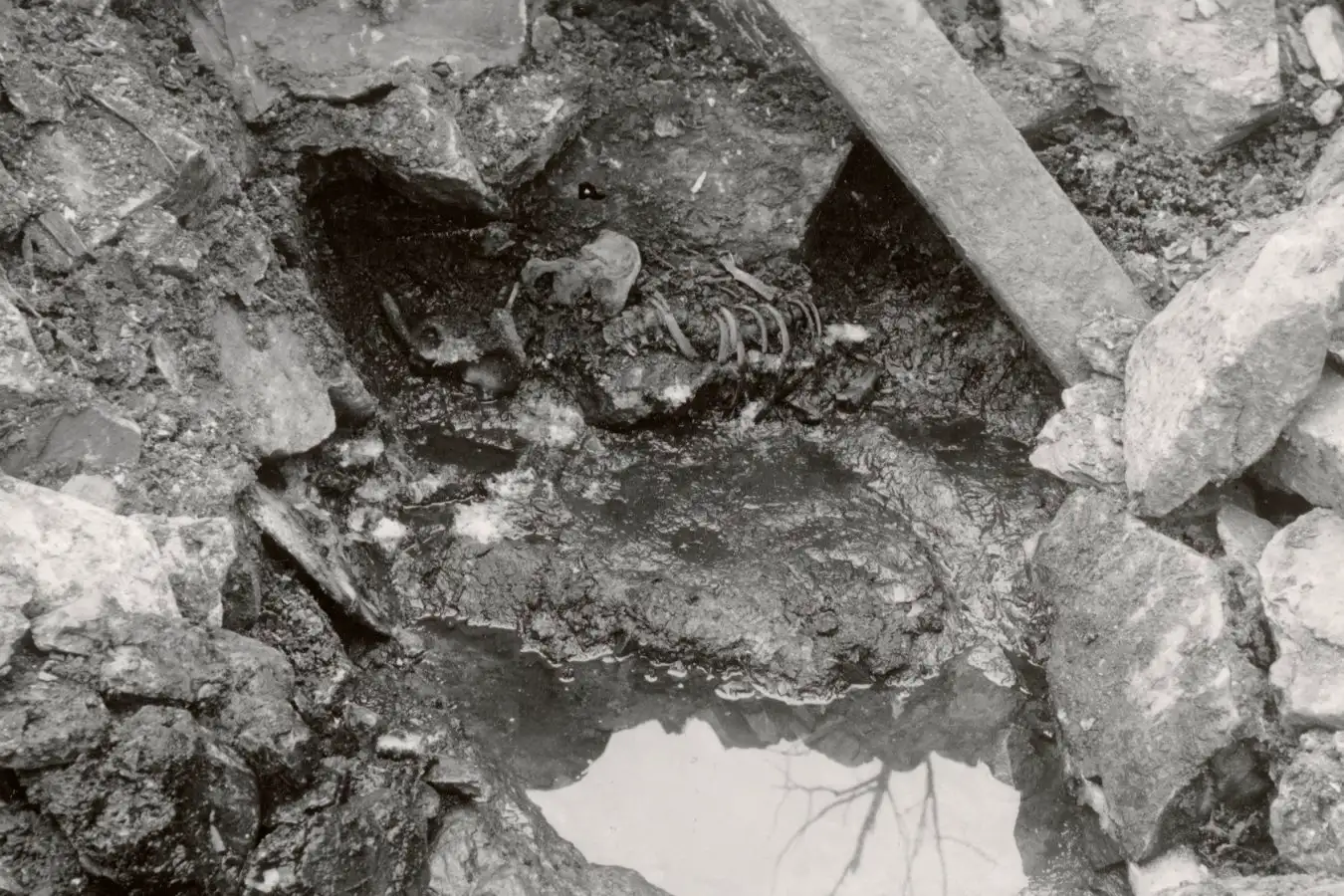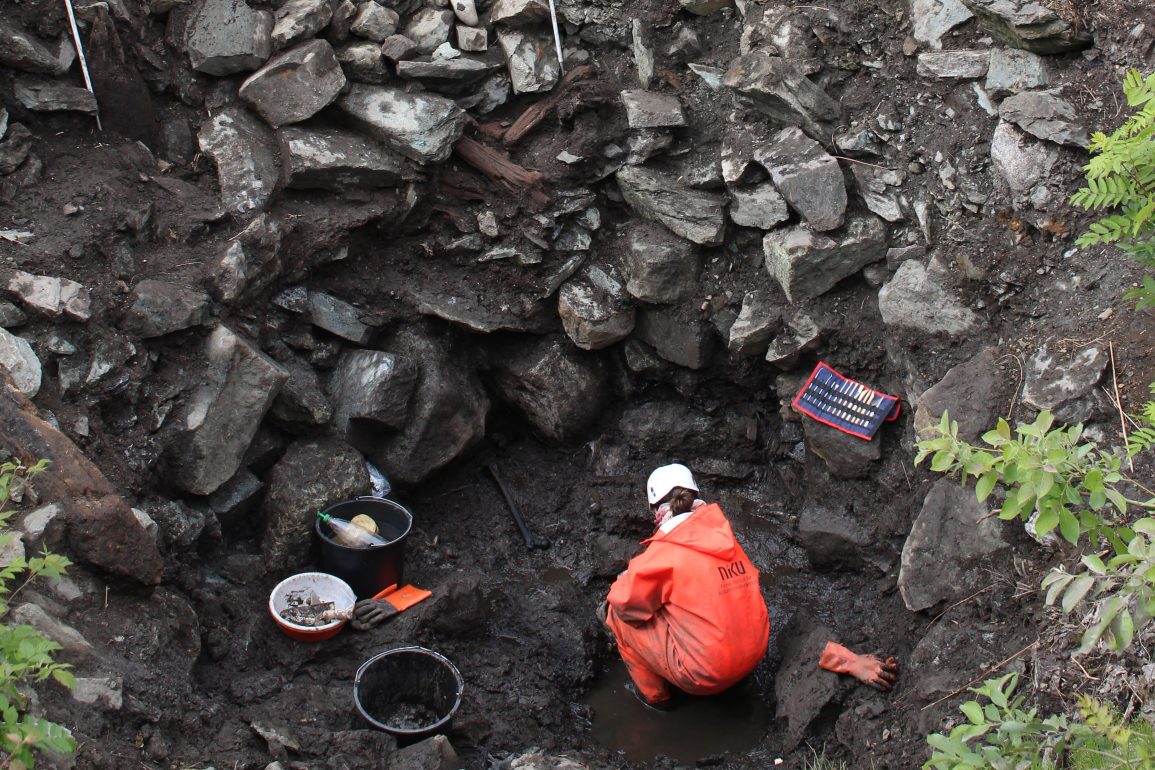The discovery of skeletal remains in a well at Norway’s Sverresborg castle has revealed connections to the 800-year-old Sverris saga, which recounts the life of King Sverre Sigurdsson and the military struggles of his time. The saga briefly mentions a body tossed into a well by raiders in 1197, purportedly to poison the water supply of the castle.
These remains, now referred to as “Well-man,” were initially unearthed in 1938 but could only undergo basic examination due to the limited technology of the period. Recent advancements in genetic and radiocarbon analysis, however, have allowed researchers to glean new insights into Well-man’s identity and historical context.
The Sverris saga details the turbulent political climate of 12th-century Norway, with battles over the throne following the death of King Sigurd Munn in 1155. King Sverre, who claimed to be Munn’s son, led a group known as the Birkebeiner against the Baglers, a faction supported by the Catholic Church.
In 1197, while Sverre was away, the Baglers seized the opportunity to attack Sverresborg castle, where they reportedly threw a body into a well to spoil the water supply. This body is assumed to be that of Well-man, though the saga provides little else about him.
The excavation of Well-man’s remains has been gradual. Initial findings in 1938 uncovered parts of his skeleton beneath stones, suggesting intentional placement in the well. Later excavations in 2014 and 2016 uncovered more bones, including his skull and fragments of his left hand.
Researchers estimate he was around 30 to 40 years old at death, with evidence of blunt force trauma on his skull, likely inflicted before death. These injuries may indicate his involvement in the siege and explain why his body was chosen to be discarded in the well.

Radiocarbon dating has placed Well-man’s death around 900 years ago, matching the timeline of the Sverris saga. However, attempts to retrieve DNA from his bones met with difficulty, as the samples were poorly preserved. Instead, a tooth sample provided enough genetic material for sequencing, revealing that Well-man likely had blue eyes, light brown or blond hair, and a medium skin tone, which offers a glimpse into his physical appearance.
DNA analysis also uncovered an unexpected twist about Well-man’s origins: genetic comparison showed he was closely related to people from southern Norway, contradicting earlier assumptions that he might have come from central Norway, like King Sverre’s supporters. This finding suggests that Well-man was likely a member of the raiding Baglers and that his body was disposed of in the well by his own comrades to poison the water, adding a strategic layer to the saga’s account of the attack.
The saga’s brief mention of the body in the well implies the Baglers intended to make Sverresborg uninhabitable, though no pathogens were found in Well-man’s remains to confirm contamination of the water. The preservation and handling of his DNA presented additional challenges: during the sequencing process, the researchers had to grind part of the tooth, permanently destroying part of the sample. However, the remaining teeth may allow future studies to yield further information using more advanced technologies.
Experts in the field have praised the study’s integration of historical records and scientific techniques. Maja Krzewińska, a researcher in palaeogenetics, expressed admiration for the study’s methodology and findings. She noted that the accurate dating of Well-man’s remains, combined with the revelation of his southern Norwegian origins, invites fresh interpretations of medieval warfare tactics and strategy, deepening the historical understanding of the events described in the saga.
Though Well-man’s exact identity may remain a mystery, this discovery elevates his role from an anonymous character in a saga to a focal point of historical and scientific investigation. Study coauthor Michael D. Martin emphasized that combining archaeological science, DNA analysis, and historical research enables a more objective view of history, allowing modern audiences to explore the stories of individuals who lived centuries ago with greater clarity and depth.

